Note
Go to the end to download the full example code or to run this example in your browser via Binder
i. ridge
This file shows the usage of ridge() function.
# sphinx_gallery_thumbnail_number = 2
import numpy as np
import pandas as pd
from easy_mpl import ridge
import matplotlib.pyplot as plt
from easy_mpl.utils import version_info
version_info() # print version information of all the packages being used
{'easy_mpl': '0.21.4', 'matplotlib': '3.8.0', 'numpy': '1.26.1', 'pandas': '2.1.1', 'scipy': '1.11.3'}
data_ = np.random.random(size=100)
_ = ridge(data_)
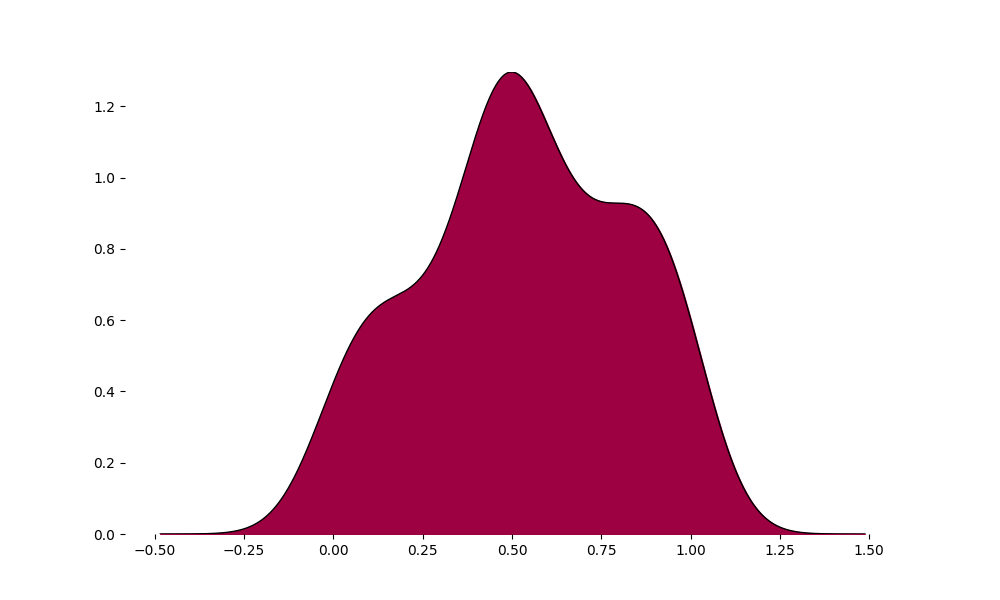
data_ = np.random.random((100, 3))
_ = ridge(data_)

specifying colormap

The data can also be in the form of pandas DataFrame
_ = ridge(pd.DataFrame(data_))
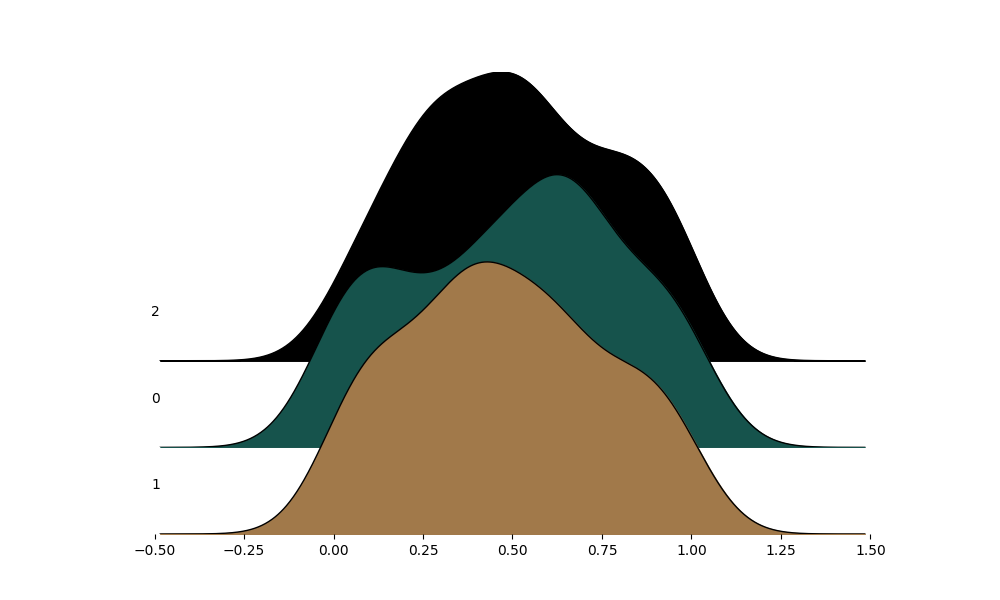
if we don’t want to fill the ridge, we can specify the color as white
_ = ridge(np.random.random(100), color=["white"])
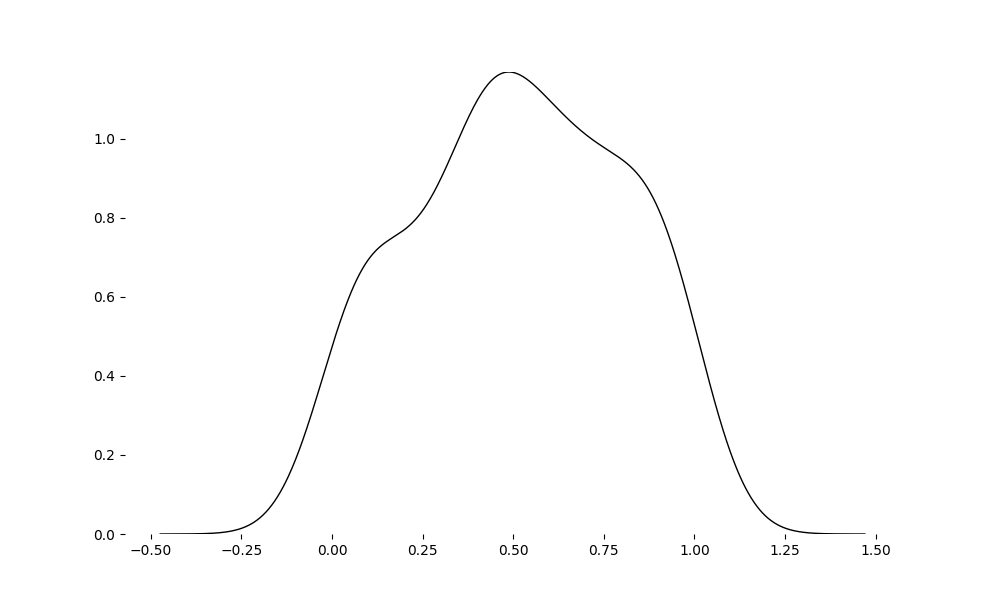
we can draw all the ridges on same axes as below
df = pd.DataFrame(np.random.random((100, 3)), dtype='object')
_ = ridge(df, share_axes=True, fill_kws={"alpha": 0.5})

we can also provide an existing axes to plot on
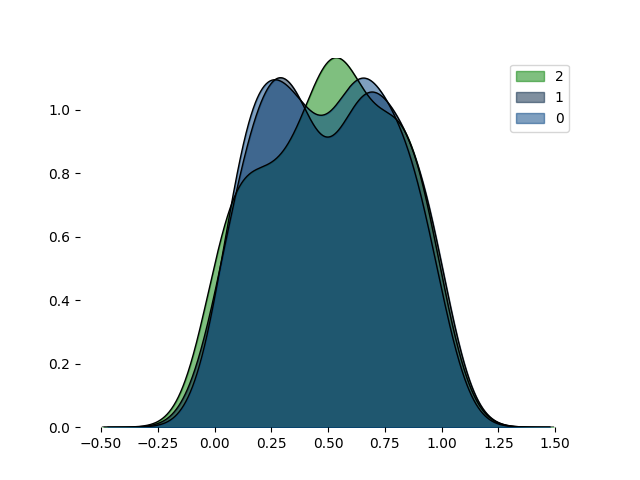
The data can also be in the form of list of arrays
x1 = np.random.random(100)
x2 = np.random.random(100)
_ = ridge([x1, x2], color=np.random.random((3, 2)))
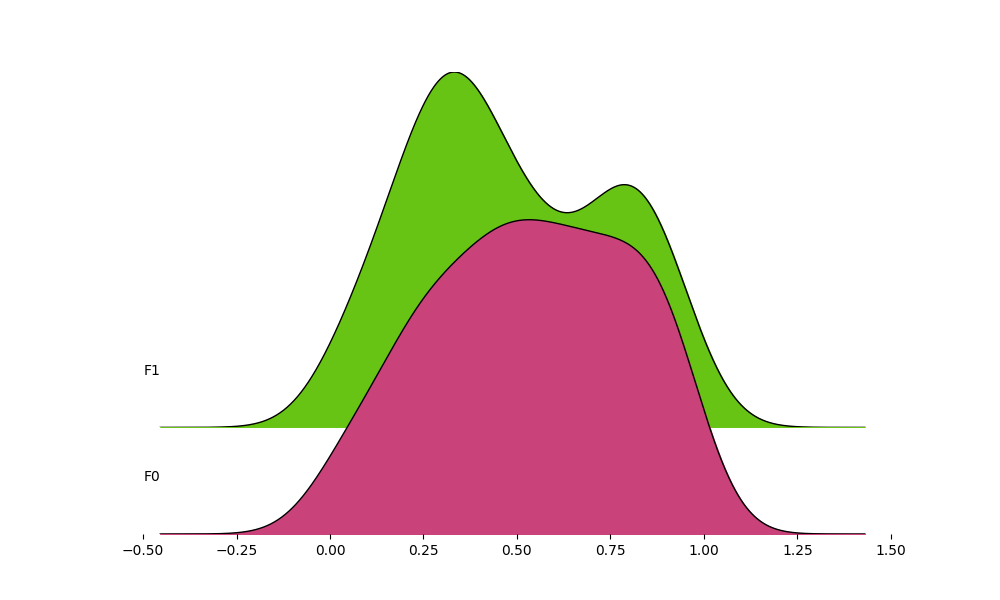
The length of arrays need not to be constant/same. We can use arrays of different lengths
x1 = np.random.random(100)
x2 = np.random.random(90)
_ = ridge([x1, x2], color=np.random.random((3, 2)))

(1446, 25)

f = 'https://media.githubusercontent.com/media/HakaiInstitute/essd2021-hydromet-datapackage/main/2013-2019_Discharge1015_5min.csv'
df = pd.read_csv(f)
df.index = pd.to_datetime(df.pop('Datetime'))
print(df.shape)
df.head()
(543568, 12)
groupby_year = df.groupby(lambda x: x.year)
_ = ridge(
[grp['Qrate'].resample('D').interpolate(method='linear') for _, grp in groupby_year],
labels=[name for name, _ in groupby_year],
)
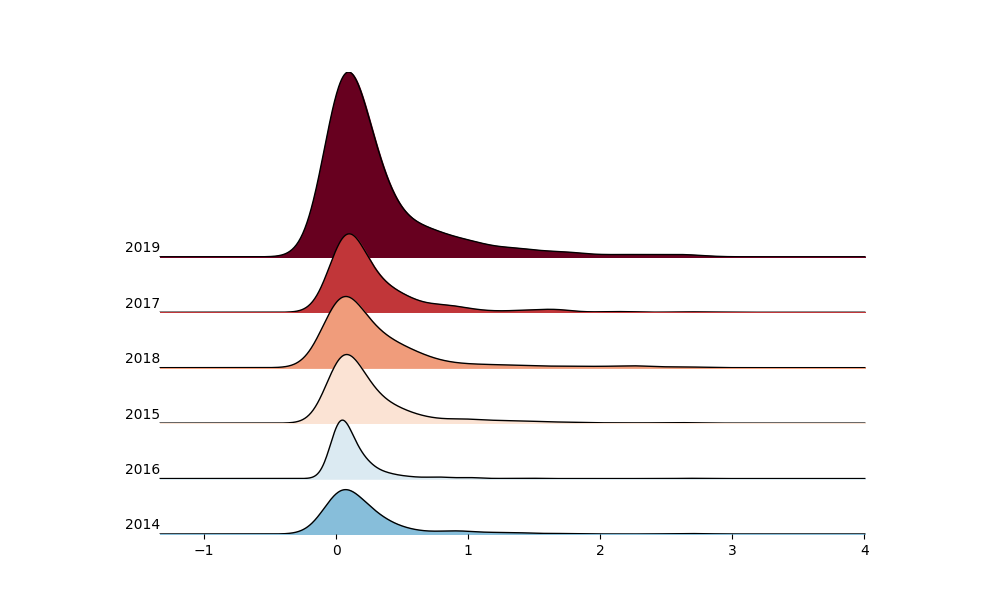
Total running time of the script: (0 minutes 11.137 seconds)